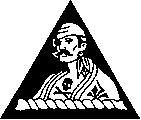This was a daylight incendiary mission involving 25 planes from the 6th Bomb Group:
For extraordinary achievement while participating in
aerial flight on 29 May 1945. These individuals were members of the crew of
a B-29 aircraft based in the Marianas Islands on a daylight incendiary
attack on the city of Yokohama, leading a flight within the lead squadron.
On the bomb run, heavy, intense and accurate anti-aircraft fire was
encountered, and the lead aircraft of the squadron developed engine trouble
causing the formation to disperse into flights. Notwithstanding extensive
damage to their plane, this crew immediately assumed the initiative and led
the flight through the remaining portion of the bomb run and over the
target, successfully dropping their bombs as briefed with devastating effect
on the industrial area of the city. During the bomb run, the plane was
subjected to aggressive attacks by three fighters, two firing cannons and
machine guns, the other dropping phosphorous bombs from above. On the
breakaway from the target, the formation was subjected to further intense
flak and five additional fighter attacks, but returned successfully to their
home bases. These individuals, veterans of more than thirty combat missions,
performed their assigned duties with skill and devotion, accomplishing a
dangerous mission with outstanding success and reflecting great credit on
themselves and the Army Air Forces.
First Lieutenant LEE M. JEPPERSON as Pilot
First Lieutenant GEORGE E. LITTLE as Bombardier
Flight Officer IRWIN L. PODELL as Navigator
Master Sergeant MARVIN SELITSKY as Flight Engineer
Technical Sergeant STANLEY L. POWELL as Central Fire Control Gunner
Staff Sergeant EDWARD D. FISCHER as Radar Operator
Staff Sergeant ROBERT I. HANLEY as Radio Operator
Staff Sergeant CHARLES PITTS, JR as Right Gunner
Staff Sergeant NORMAN H. LEMOI as Left Gunner
Staff Sergeant WILLIAM A. JOHNSTON, JR as Tail Gunner
[Transcribed by David Wilson, son of Sgt Bernard E. Wilson (Gunner, "Anonymous IV")]
A separate DFC Citation was written for Captain JEFFERY RICHARDS as Airplane Commander
of Crew #3915.

